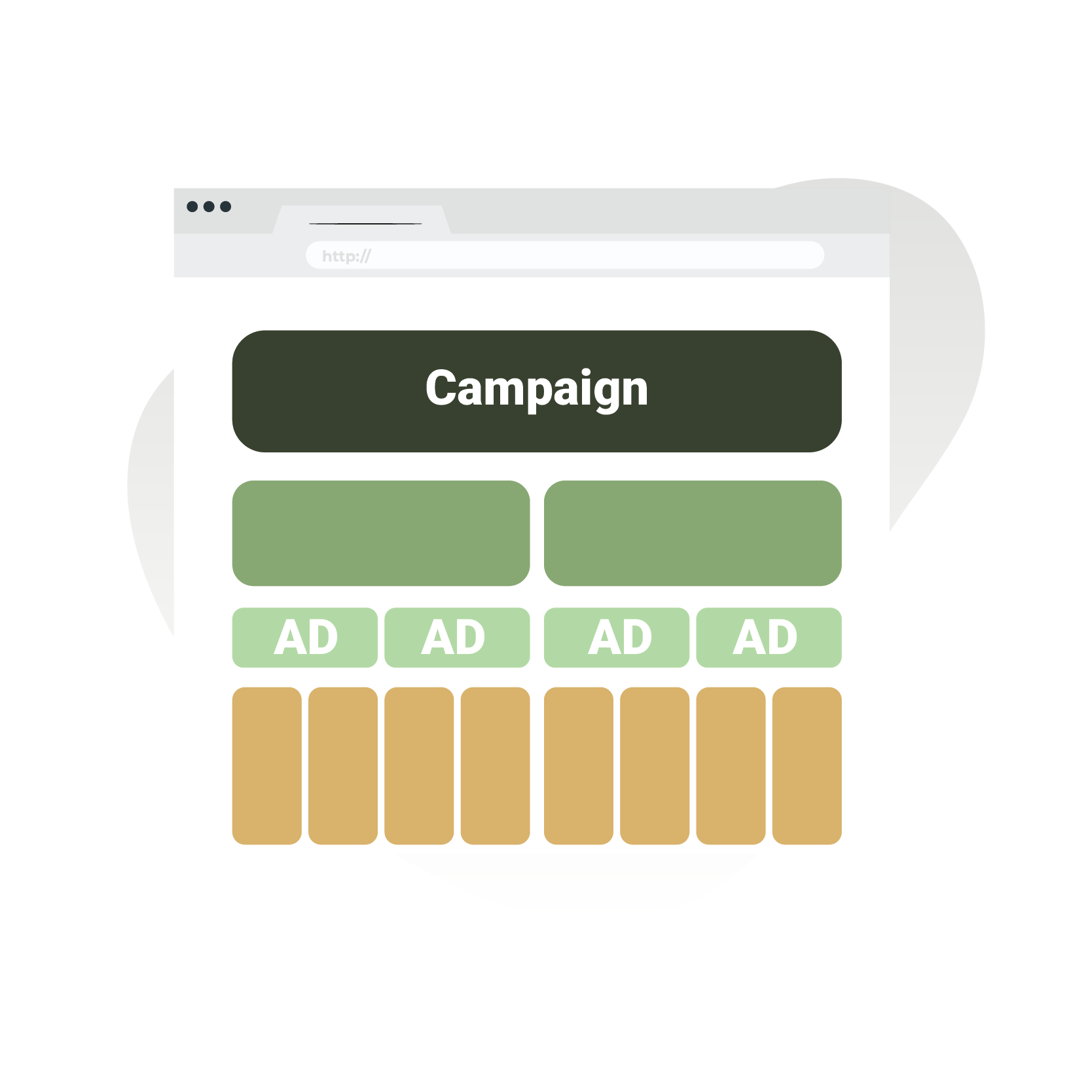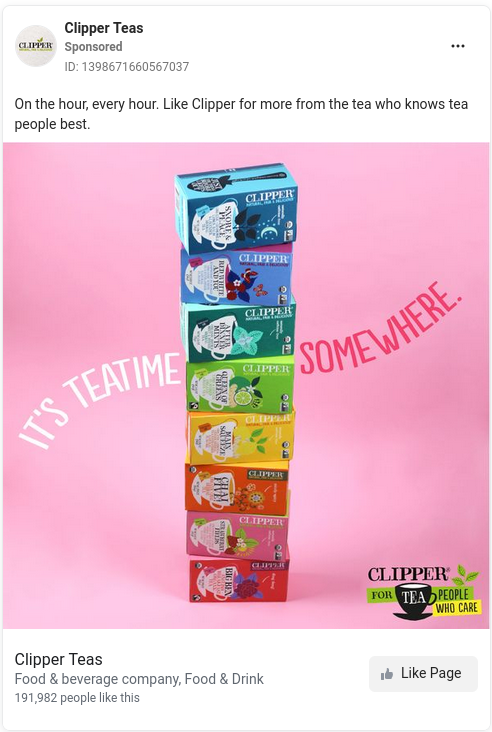
I hope you enjoy reading this blog post.
If you want me to do your marketing for you, click here.
Tea Ads
Tea ads promote product sales, and are designed to stimulate demand and consumer interest.
The elements in tea ads differ based on the medium used (e.g., social media ad, pay per click ad, billboards, video ads such as tea ads on TV or Youtube). The best tea ads have a compelling combination of ad components: images, copywriting and a call to action all work together to influence viewers.
Tactics Used In Tea Ads
Product Substitution
Substitute products, or products that consumers may consume instead of an alternative, represent an opportunity when marketing tea. In countries where the coffee market exceeds the tea market, brands can encourage customers to embrace product substitution, replacing their coffee with tea.
Similarly, brands can market tea as a healthy substitute for soft drinks, capitalising on the growing trend for more healthy food and beverage options.
Product Features And Benefits
Old tea ads highlighted the functional benefits of tea, a tactic that is still used by tea brands today. Lipton ran a tea ad in 1950 positioning tea as a source of energy.
Today, some tea brands are running ads that highlight that same benefit.

Many tea brands run ads promoting the functional benefits of their tea. Companies like Pique Tea and DavidsTea often emphasise the healthful benefits of tea (e.g., skin, gut health, sleep) in their advertising.
Symbolic and Lifestyle Value
Tea ads have evolved through the ages, yet some vintage tea ads used marketing techniques that are still used today. Consider this ad run by Lipton, which highlights the tea products association with affluence and leisure.
Compare it to a similar contemporary ad for tea run by Taj Mahal Tea, which also emphasises the product relationship to affluence and leisure.
Lifestyle ads are successfully applied when you segment the tea market into niches, clearly defining the lifestyle of your target audience. For example, Pique occasionally runs Facebook ads for tea highlighting how their product supports specific customer lifestyles (e.g., intermittent fasting).

Brand Awareness
Many tea brands focus brand awareness champions within their pay per click advertising (e.g., competitor campaigns) and television ads.
Lipton Brisk ran a successful television ad in 2011 featuring Eminem. An average of 111 million people watched the 2011 super bowl game, making it one of the most-watched shows ever.
Similarly, the Gold Peak iced tea commercial in 2019 was a successful brand awareness ad campaign. The ad for bottled tea begins with emotional appeals of home (“real family”, showing scenes of social connectivity), maintains a steadfast theme of authenticity (regular, prominent use of the word “real” in different contexts), and concludes by highlighting product purity (“real iced tea”).
Virtue Signalling
Virtue signalling, the public expression of an opinion to demonstrate one's good character or moral correctness, is increasingly permeating tea ads. Virtuous ads are most often applied to brand awareness campaigns.

A recent (2021) Pure Leaf Tea commercial uses some cultural branding tactics in their ad. They redefine how women use “no”, portraying nonconformity as a sign of strength and autonomy, attempting to address the complex relationship some women have with saying “no”, thereby gaining social kudos. The ad concludes with virtue signalling, displaying Pure Leaf Tea’ relationship with “no” (e.g., no artificial sweaters, no artificial favours, no extra stuff)
Tea Ads By Brand
AriZona Iced Tea
AriZona tea ads strike an effective balance between ads that are clearly branded content, and ads that feel like user generated content. Many AriZona tea ads make use of video, increasing the chance that people will engage with it.
Clipper Tea
Clipper Tea ads effectively use colours to draw attention to their ads; Clipper’s green tea ads make a particularly strong use of colour. 80% of Clipper Tea advertisements on Facebook and Instagram showcase their tea packaging, augmenting their core product.
Lipton
Lipton’s new ads focus on highlighting cultural relevance; the brand uses modern cultural symbols (e.g. memes) to connect with a wide audience, and display relevance. Similarly, Lipton shows its cultural relevance by inserting its products into events within the brand’s bottled tea ads.
Lipton also continues to use those with social status in their ads, replacing actresses used in some old Lipton tea advertisements with influencers and music celebrities.
For example, a 2021 Lipton tea advertisement features musician T-Pain, referred to as “Cousin T” in the ad. The Lipton tea advert highlights the joys of reconnecting with family and friends, and highlights Lipton tea’s products in the context of that social interaction.
Taj Mahal Tea
Taj Mahal Tea ads consistently position their product as symbolising a lifestyle of peace and leisure. This carries through from their Facebook ads to their TV commercials.
In the brand's commercial, the Taj Mahal Tea advertisement actress is shown at peace in a scenic yard, and a hauntingly beautiful song plays throughout the tea commercial.
Twisted Tea
Twisted Tea ads apply some sophisticated marketing tactics in their tea advertisements. For example, they highlight contextual consumption, the bandwagon effect, and engagement in their ads.
Tea Ads By Type
Milk Tea
Milk tea ads spotlight the product; three milk tea advertisement samples show how boba ads rely heavily on enticing product photography. Bubble tea social media ads and content emphasise the hedonistic pleasure (e.g., flavour, rich decadence) and, increasingly, purity (eg., single origin tea, from Taiwan).
Detox Tea
Detox tea brands are among the boldest in highlighting alleged product benefits, such as combating bloating. Similarly, detox tea ads on Instagram are curated to provide social proof of the product's alleged benefits.
Social media tea advertisements often make use of influencer marketing to increase the status and perceived credibility of their product. For example, Fit Tea ads often feature celebrities like Kim Kardashian.
Other Tea Ads
Showcase Your Brand More
If this article mentions your brand, I invite you to share a quote about what your tea brand stands for and how you use ads to communicate that.

Grow Your Business With Google Ads. Google gives you control over when you target your audience to reach them at the right moment. Purchase your Google ads campaign today.

Grow Your Audience With Facebook Ads. Facebook gives you control over who you target and lets you promote your tea products. Purchase your Facebook targeting campaign today.

Increase Sales With Remarketing Ads. Remarket your tea prices with Facebook campaigns and increase your sales. Purchase your Facebook remarketing campaign today.


I hope you enjoy reading this blog post.
If you want me to help you to sell more coffee and tea, book a call.




















